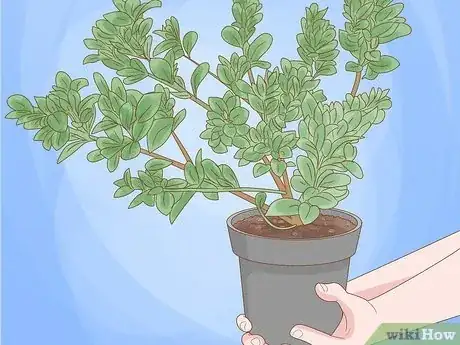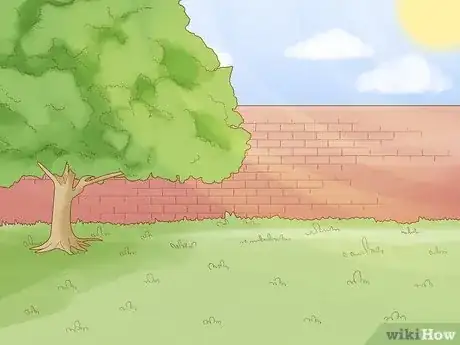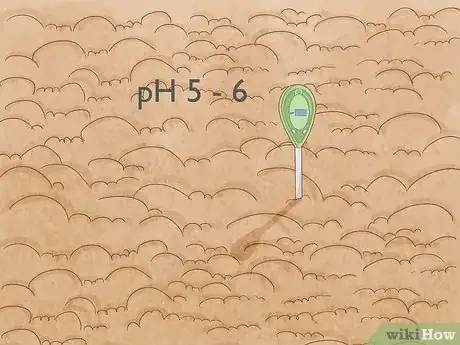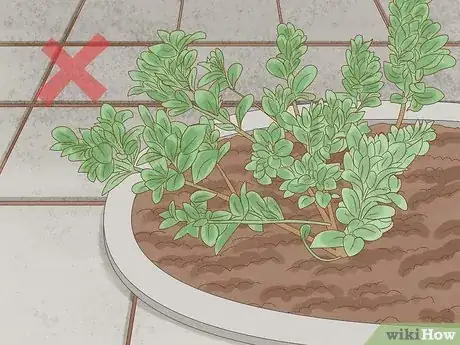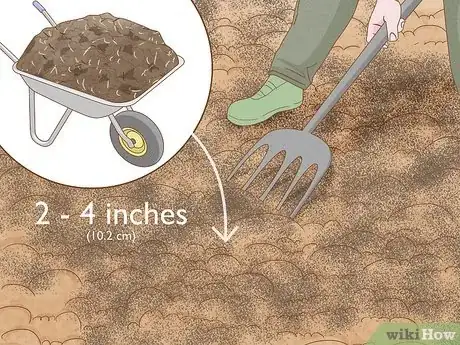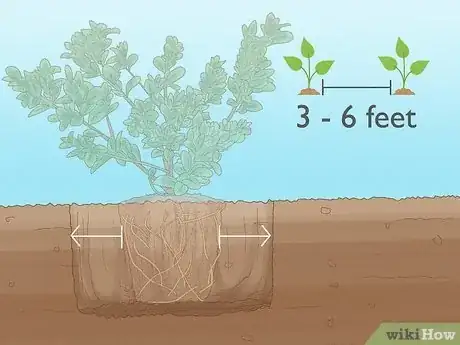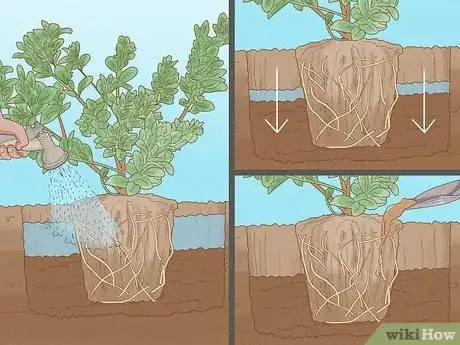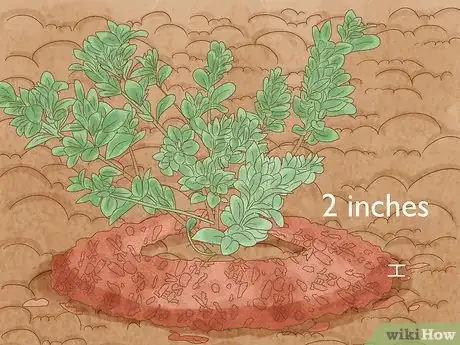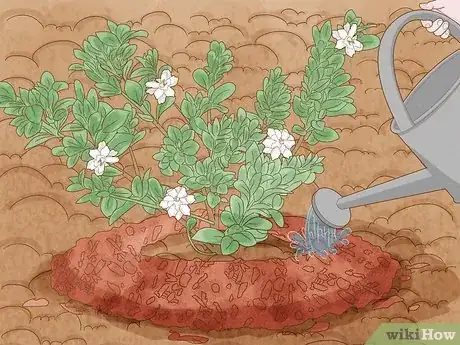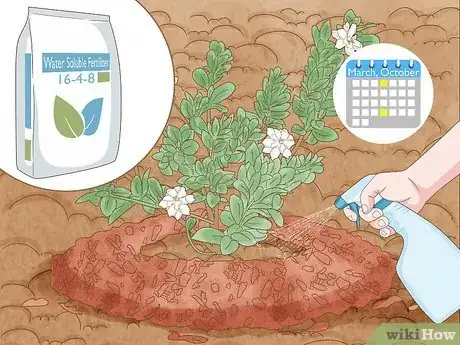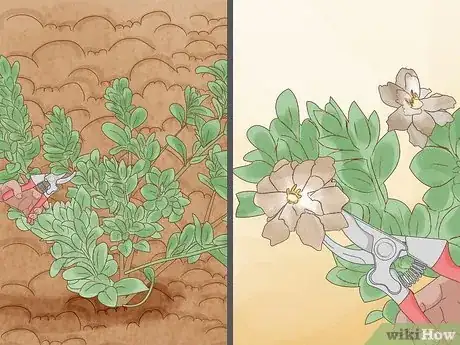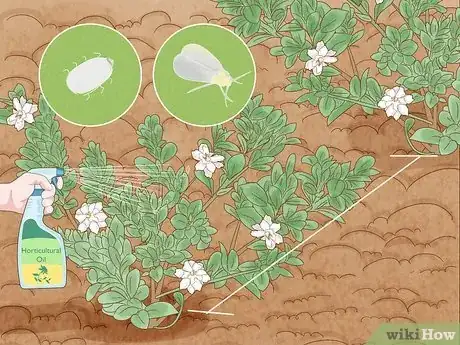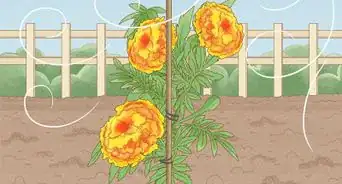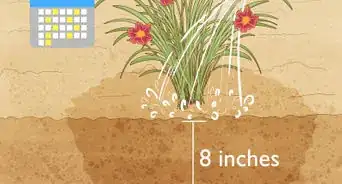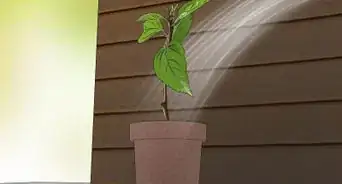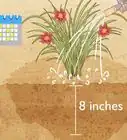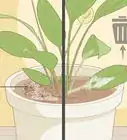This article was co-authored by Maggie Moran. Maggie Moran is a Professional Gardener in Pennsylvania.
wikiHow marks an article as reader-approved once it receives enough positive feedback. This article received 24 testimonials and 98% of readers who voted found it helpful, earning it our reader-approved status.
This article has been viewed 300,994 times.
Gardenias have won the hearts of swooning Southern belles for ages. Their beautiful petals and divine fragrance have indeed made them a very beloved flower. Gardenias can be grown along hedge rows, in gardens, in your yards or even in pots. However, the fragrant, blooming plant has some very specific demands when it comes to sunlight, temperature, and moisture. Learning all of the details to grow gardenia is well worth the trouble when it comes to the smell and beauty you will receive from your plant.
Steps
Choosing Your Gardenia and Location
-
1Select a compact plant with deep green, glossy foliage. When you select your variety of gardenia, keep in mind that most gardenia varieties grow better in tropical and subtropical climates. The Kleim's Hardy Gardenia is one of the only gardenia varieties that can withstand relatively cold temperatures.[1]
- Other varieties that are more suited for colder weather include Chuck Hayes and Frost Proof.
-
2Choose a location. Gardenias need a home that receives full to partial sunlight. They like the warmth of the sun for proper growth. Strive to give your gardenia direct morning sun rather than direct afternoon sun.
- If you are putting your gardenia in an indoor pot, you will want to keep it near a south-facing window so that it can get bright, indirect sunlight for most of the day.
Advertisement -
3Choose a spot with good soil. Gardenias grow best when they are planted in rich soil that is moist but well-drained. Gardenias do best in soils with acidic pH levels. Try to maintain a pH of 5 or 6. You may want to have your soil tested and then add nutrients according to the results. In particular, if your soil is too basic you will want to add sulfur.[2]
Planting Your Gardenia
-
1Avoid planting too close to concrete. While you can still plant your gardenias outside windows so that you can enjoy their lovely smell, you do not want to plant them right up against your house or walkways. The soil near concrete changes in alkalinity and gardenias will struggle when planted in soil with too high of a pH level.
-
2Add 2 to 4 inches (10.2 cm) of organic material to the soil. Gardenias like soil that is rich in nutrients. Work fertilizer, peat moss or manure into the soil to enhance the growth of your plant.
-
3Plant the gardenia in the prepared area. Plant your gardenias either in the fall or spring. If you are planting more than one gardenia, you must leave three to six feet of space between each plant. The hole you make should be twice as wide as the plant's root ball and only as deep as its length.
- If you are planting your gardenia in a pot, follow the same instructions--the pot will have to be large enough that you can make a hole that is twice as wide as the root ball.
-
4Place the gardenia in the hole you have made. Cover the root ball with soil so that it is halfway covered, then water the hole. Adding water before you fully cover the gardenia removes any air bubbles and settles the soil. After the water has settled, cover the root ball the rest of the way and pat the soil down around the gardenia. Water the soil and plant again.
-
5Cover the ground surrounding the gardenia with mulch. In particular, pine mulch works well because it adds to the acidic nature of the soil. Keep the soil surrounding the plant moist until its roots are well established. The mulch should be two inches thick, but shouldn't touch the base of the plant.
Caring for Your Gardenia
-
1Water the plant every few days after the initial period of establishment. Try to avoid getting the leaves and blooms soaking wet, as wet leaves are more prone to fungal growth. Water the plant more during extremely dry periods. Gardenias need less water when they are not blooming. Gardenias thrive best when given distilled room-temperature water rather than cold water.[3]
- Check the topsoil of your potted gardenias before watering. If it is still damp, hold off on watering. Many gardenia experts recommend placing your gardenia on a pebble filled tray. You can then pour water on the pebbles, which will in turn provide humidity and moisture for your gardenia.[4]
-
2Fertilize your growing plant. Gardenias should be fertilized every three weeks. You should use an acid-based fertilizer as gardenias prefer acidic soil and fertilizer. Established plants need fertilizer each March and October.
- Choose from fertilizers such as 6-6-6, 10-10-10, 20-20-20 or 16-4-8. You may find it easier to use a water-soluble fertilizer with your gardenias.
-
3Prune your gardenia when it is dormant. You should only prune your plant when it is not producing blooms. You should never cut all of the leaves off the plant. You should also 'deadhead' your plant after it is done pruning. This means removing the dead flowers to help your plant produce more blooms.
-
4Control garden pests. In particular, you should check your gardenias for whiteflies and mealybugs. Other gardenia pests include aphids, spider mites, and thrips. If you notice that your plants have a pest problem, use a horticultural oil to get rid of them.
- Over-watering your plants and planting them too close to one another are both causes of pest problems. Avoid doing both of these things.
Expert Q&A
Did you know you can get expert answers for this article?
Unlock expert answers by supporting wikiHow
-
QuestionAre coffee grounds good for gardenia plants?
 Maggie MoranMaggie Moran is a Professional Gardener in Pennsylvania.
Maggie MoranMaggie Moran is a Professional Gardener in Pennsylvania.
Home & Garden Specialist
-
QuestionCan you grow gardenias from cuttings?
 Maggie MoranMaggie Moran is a Professional Gardener in Pennsylvania.
Maggie MoranMaggie Moran is a Professional Gardener in Pennsylvania.
Home & Garden Specialist
-
QuestionWhat zones do gardenias grow best in?
 Maggie MoranMaggie Moran is a Professional Gardener in Pennsylvania.
Maggie MoranMaggie Moran is a Professional Gardener in Pennsylvania.
Home & Garden Specialist
Warnings
- The leaves on the plants may turn yellow if you give your gardenia too much water or it is planted in bad soil.⧼thumbs_response⧽
Things You'll Need
- Acidic soil
- Fertilizer
- Peat moss or manure
- Gardenia plant
- Water
- Mulch
References
About This Article
To grow a gardenia, it’s best to plant it in the fall or spring. Dig a hole twice as wide as your gardenia’s root ball. Avoid planting your gardenia near concrete, since the alkalinity of concrete can affect the soil near it. Once you’ve placed the plant in the hole, fill it with pine mulch, which has a slight acidity that gardenias need. Water your plant every few days or more often during dry weather. Every 3 weeks, mix some acid-based fertilizer into the soil to give it the nutrients it needs. For more tips from our Gardening co-author, including how to protect your gardenia from garden pests, read on!
